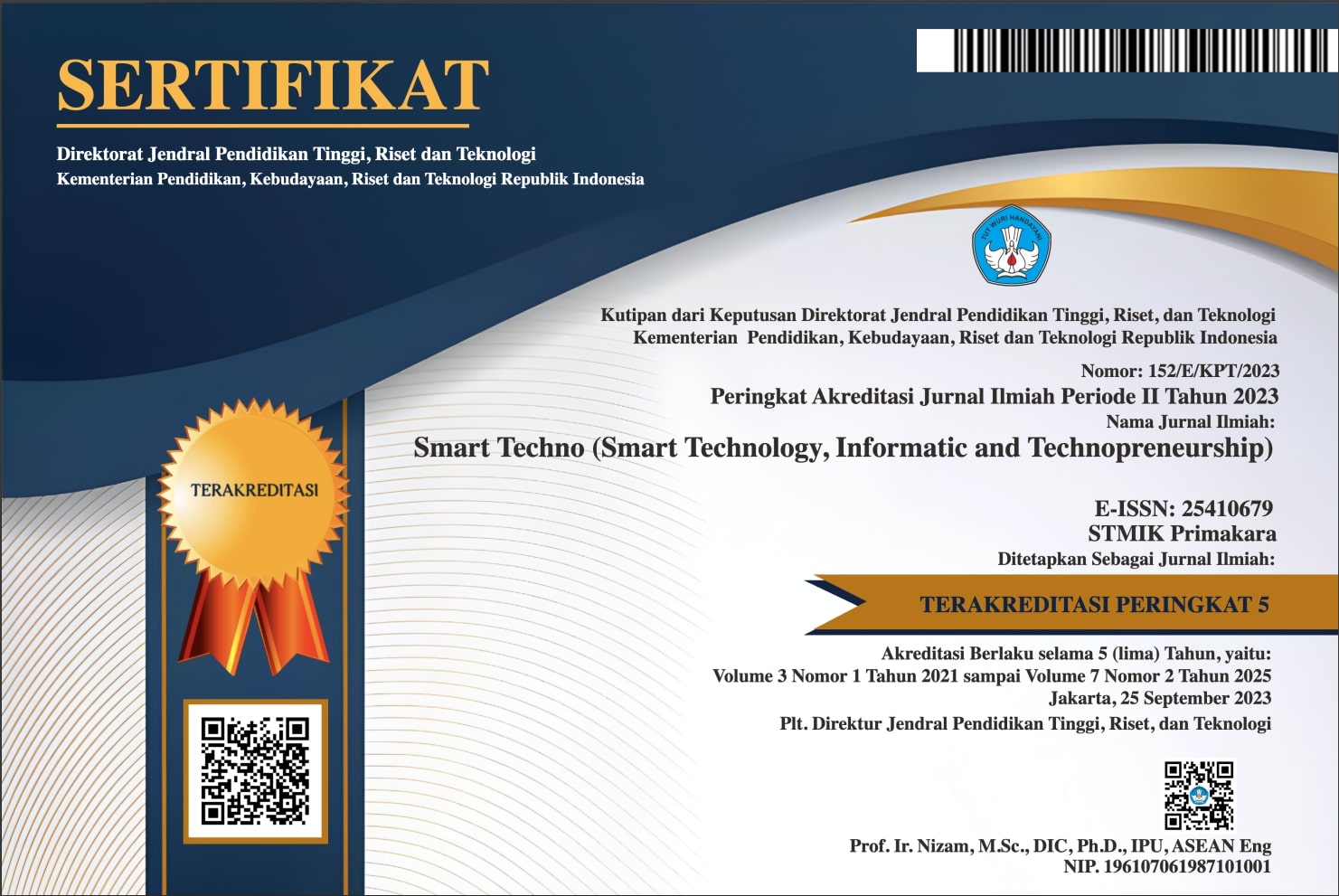Implementasi Data Mining Untuk Mengklasifikasikan Produk Pada Sebuah Supermarket Mengunakan Algoritma ID3 Pada Orange
Abstract
Technological developments are increasingly increasing or developing very rapidly. The development of technology has also affected the increasing needs of the community, so supermarkets and retailers are competing to provide various types of products or daily needs. However, in every collection or supermarket, it is necessary to know what types of products are needed by customers who will later become targets. To help shops and supermarkets, the authors will conduct an analysis to find out the types of products that customers like by implementing data mining in supermarket classification using the ID3 algorithm
Downloads
References
Khaerul Ma’mur, “Analisis Penerapan Algoritma ID3 dalam Mendiagnosis Kesuburan Pria” Jurnal Informatika Universitas Pamulang, vol. 4, no. 2, pp:35-42. 2019.
Broto Poernomo T.P. dan Rina Dewi Indah Sari, “Penerapan Data Mining Untuk Prakiraan Cuaca Di Kota Malang Menggunakan Algoritma Iterative Dichotomiser 3 (ID3)” JOUTICLA, vol. 3, no.2, pp: 101-108. 2017.
Yusuf Elmande dan Prabowo Pudjo Widodo, “Pemilihan Criteria Splitting Dalam Algoritma Iterative Dichotomiser 3 (ID3) Untuk Penentuan Kualitas Beras
: Studi Kasus Pada Perum Bulog Divre Lampung” Jurnal TELEMATIKA MKOM vol.4 no.1, pp:73-82. 2012.
Avia Enggar Tyasti, Dwi Ispriyanti dan Abdul Hoyyi, “Algoritma Iterative Dichotomiser 3 (ID3) Untuk Mengidentifikasi Data Rekam Medis (Studi Kasus Penyakit Diabetes Mellitus Di Balai Kesehatan Kementerian Perindustrian, Jakarta)” Jurnal Gaussian, vol. 4, no. 2, pp:237-246. 2015.
M. Safii, “Implementasi Data Mining Dengan Metode Pohon Keputusan Algoritma ID3 Untuk Menentukan Status Mahasiswa” Jurnal Mantik Penusa, vol. 2, no. 1, pp:82-86. 2018.
Copyright (c) 2021 Nengah Widya Utami, I Wayan Budi Suryawan

This work is licensed under a Creative Commons Attribution 4.0 International License.
Authors who publish with the Smart Techno agree to the following terms:
- Authors retain copyright and grant the journal the right of first publication with the work simultaneously licensed under a Creative Commons Attribution License (CC BY-SA 4.0) that allows others to share the work with an acknowledgment of the work's authorship and initial publication in this journal.
- Authors are able to enter into separate, additional contractual arrangements for the non-exclusive distribution of the journal's published version of the work (e.g., post it to an institutional repository or publish it in a book), with an acknowledgment of its initial publication in this journal.
- Authors are permitted and encouraged to post their work online (e.g., in institutional repositories or on their website) prior to and during the submission process, as it can lead to productive exchanges, as well as earlier and greater citation of published work. (See The Effect of Open Access)







